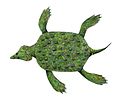| Anningasaura Temporal range: Early Jurassic, | |
|---|---|
 | |
| Skull cast | |
| Scientific classification | |
| Kingdom: | Animalia |
| Phylum: | Chordata |
| Class: | Reptilia |
| Superorder: | † Sauropterygia |
| Order: | † Plesiosauria |
| Genus: | † Anningasaura Vincent and Benson, 2012 |
| Type species | |
| †Anningasaura lymense Vincent and Benson, 2012 | |
Anningasaura is an extinct genus of basal plesiosaur. It is known from a single type species, A. lymense, discovered in Early Jurassic rocks of Lyme Regis in the United Kingdom. [1]








